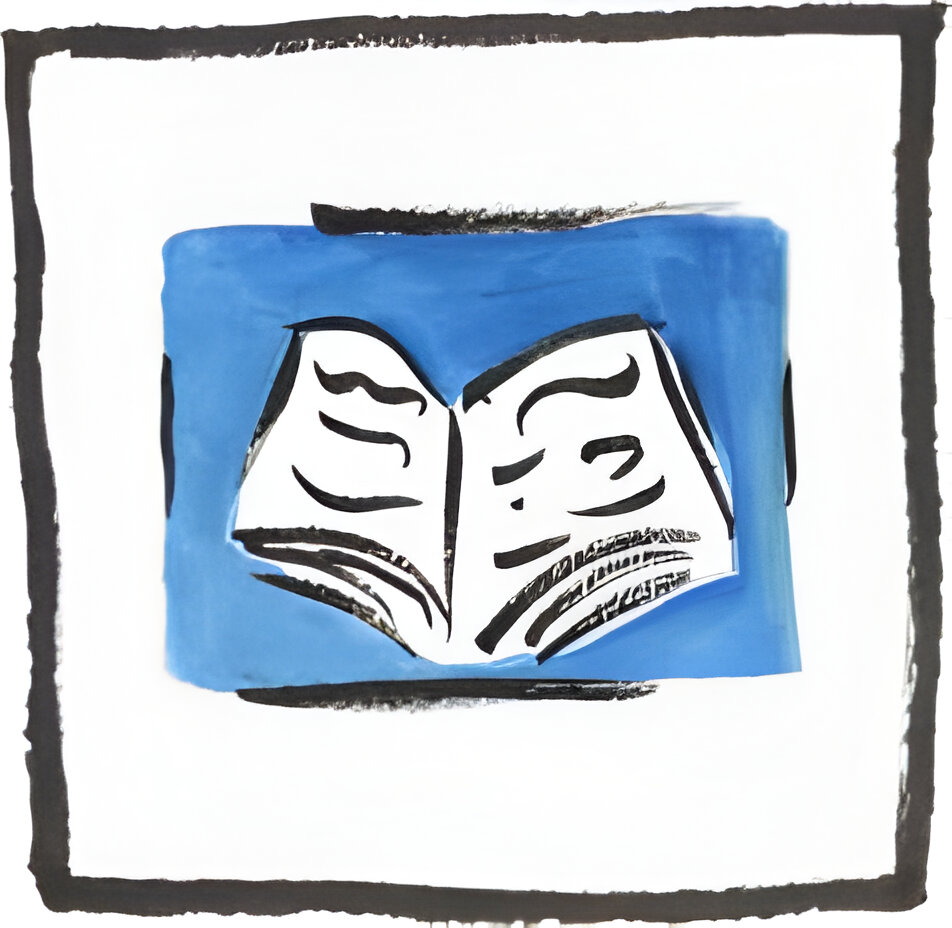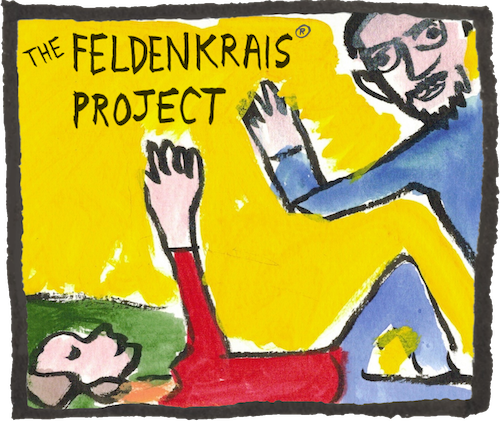These audio lessons are sourced directly from Moshe Feldenkrais's 1972 book, Awareness Through Movement. He lays out his method in part 1 of the book, then illustrates his ideas with 12 lessons in part 2, which he calls "Doing to Understand."
Over the years, the Feldenkrais Practitioner community has begun to teach many of these lessons in other ways, as I often do myself. But there’s great learning value in carefully examining Feldenkrais's originals, so for these recordings I've mostly retained his steps and lesson titles even as I teach in my own words. I sometimes take small liberties to make them more accessible and to follow the students I was watching.
This collection is for experienced Felden-fans, and part of our donor benefits for Patron-level donors. Lesson #2 is a free talk which can serve as an introduction to the series.
There's rich learning to be found, but for a variety of reasons many of these lessons are more challenging than most others on our website. Click through the lesson note tabs for help, and see my discussion below with a student for more context.
I especially recommend this collection to Feldenkrais professionals, trainees, and other movement professionals and super-movers, but you don't have to be a pro to benefit.
If you wish to study Feldenkrais's text alongside my recorded interpretations, here's my brief study guide.
- Nick Strauss-Klein

Each lesson can be studied on its own, or you can work your way through all of them, perhaps in tandem with reading the book (usually $11-$17 on Amazon USA; not an affiliate link).
Descriptions of each lesson give you a sense of its aim, though everyone's learning process is unique and you may find other benefits.
What Is Good Posture? (Patrons)
Talk: What Action Is Good?
Spatial Relationships as a Means to Coordinated Action (Patrons)
The Movement of the Eyes Organizes the Movement of the Body (Patrons)

Pursuing study through each of these lessons' Related Lessons tabs is a great way to further your learning. If there's a lesson you're particularly intrigued by – or felt stuck in – try a few Related Lessons then repeat the one above. It can be fascinating and very helpful to do it again with more developed awareness.
You might also want to browse our Learning Guides for ideas to help bridge your Feldenkrais learning into everyday life.


Nick your teaching style lends itself well to students. I have not studied to become a teacher, but have studied for 20 years. I have worked with two teachers who were taught by Russell Delmam, a Moishe student. They were both excellent. You bring a freshness to your word choices that I find inspires me to continue.
Glad to hear it. Delman has had a big influence on me, but only through one weekend workshop and his recordings, which I think are excellent.
I’ve only been a student for about 4 months, using almost exclusively the contents of this website (as it vastly surpasses any other online resources). Due to some neurological cognitive issues, as well as a need to escape my hyperanalytic mode, I haven’t read the book. I just dove straight into experiencing the method rather than reading too much about it. This lesson collection provides a great insight into the “original” that many of the techniques are based on. Definitely a good idea to check out the recommended study order, at one point I forgot about it and boy did I find out 😅 . I haven’t done all 12 lessons yet, as my personal learning curve has taken me on a different study path for now, working through some relevant to me deep dives first. But I’m sure to come back to this collection soon as it feels right, and with luck by then I’ll be able to accompany it with the book 😊.
Interesting series, only held together by the fact that they all appear in the book together. Many different body parts are included and after each lesson I felt I was left with a sense of wonder about what I might notice afterwards. Some of the lessons are really challenging, and I found that a lot of them didn’t allow for making movement smaller if you were going to experience what it was trying to teach. I have honed my skills of doing less, and this didn’t seem like an option with some of these lessons. I don’t think I would have picked a lot of these if I hadn’t been trying to do them as a collection because I tend to search for and do lessons based on areas where I am wanting to bring my attention to like my hips and back which are chronically tight. Very interesting series.
Thanks for this comment, which helps me realize something I could emphasize more: the through line of this series is that Feldenkrais is demonstrating the breadth of human learning possible with his method.
But most people, including me, come to Feldenkrais study initially because of pains or troubles in specific parts of our bodies. Pain is evolutionarily designed to motivate us to action, so this makes a lot of sense! And of course in the modern world, to meet people where they are, we often market the Feldenkrais Method in large part “for” pain or tightness relief.
Moshe Feldenkrais absolutely wants us to feel better physically. But that alone is selling the method short. Feldenkrais is after much broader goals in sharing his method. A rough list of what he wants us to develop might be: personal safety and autonomy and confidence in a chaotic world; effectiveness in action; self-discovery; creativity; satisfaction; becoming an autodidact …and joy!
Because he wrote the book in large part to share this principles of the method that lead to all these wonderful things, these lessons are not as directly concerned with pain relief and with helping folks get comfortable in novel movement situations as many other lessons on this website, most of which are designed to be much more newcomer-friendly. In other words, Feldenkrais’s dry delivery and extremely wide variety of topics in these 12 lessons are designed as a kind of “survey course” of principles that lead toward Feldenkrais’s larger goals for us. He’s not “targeting” particular body areas for pain or tightness relief.
That said, pain relief and new functional ability are absolutely to be expected after studying these lessons, if explored in our usual curious and self-limiting way. It can be very helpful to study a wide variety of lessons that one might not otherwise choose, because we may discover surprising and useful connections behind those doors labeled “I don’t know what I don’t know,” as opposed to just doing lessons because we like the topic: doors labeled “I know what I don’t know.” We built Today’s Lesson around this principle, in fact!
I very much agree that a couple of the lessons’ primary movements mean they lack the typically available “small ways” of doing them: sit-to-stand and rolling while holding your foot come to mind. When I bump into a lesson I just can’t “do” comfortably yet I imagine my way through the parts that are inaccessible, and I make a note in my Feldenkrais journal to come back to it weeks or months later, after studying related lessons. Experiencing my changing abilities is fascinating, helpful in regular life, and inspiring of more study.
I really stepped onto my soapbox there, hope you don’t mind! I recognize you may already know much of this; I’m hoping others find it useful.
What a thoughtful response. It is good to remember we are complete and complex organisms. Focusing on what is possible for us to learn is a great through line. Allowing our brains to figure things out helps keep us flexible and open, and I supposed that at the core of it, Feldenkrais is meant to help us notice things in our organism and rewire our movement patterns. I did have a few moments in some of these lessons where I wondered how on earth I was supposed to do what was being asked. And as you put it, it is a puzzle! Ultimately I WAS able to do some of the things that really took me by surprise! So you CAN teach an old dog new tricks!!
The first time I read this book it was lent to me, not long after it was published because I was interested in movement. I had not heard of the feldenkrais method. I attempted the lessons and thought it interesting. Nevertheless it did not impress me a great deal. I returned the book and forgot all about it.
The second time I read the book, I was working as a psychologist and because of a neck injury, I had been referred to a physiotherapist who introduced me to ATM. I was impressed enough to buy my own copy of the book. When I read it this time, I thought ,”Oh, now I understand it.”
The third time I read this book, I was in the middle of a feldenkrais training and, as I read it I thought,
“Oh, this book has the answers to many of the questions I have been thinking about.”
Now I just think of it as the inspiring thoughts of a really original thinker from whom I have much to learn.